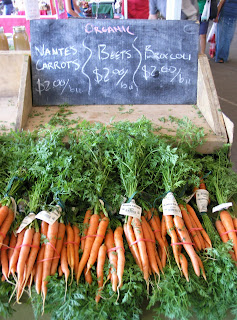 Christmas is that special time of year when social obligations lead us down a magical month-long path of sensory over-stimulation, taffeta, and gastronomical overindulgence. But whatever your opinion on Griswold-style lighting and exaggerated costume, it can be agreed that food is the main attraction. All of those wonderful things we know not to eat the rest of the year are suddenly everywhere and at our fingertips. Molten brie cheese topped with brown sugar, fruitcake, fatty preserved meats, buttery crackers topped with more cheese and meat, pecan pies and sugar cookies are the fare of the day, and if one is as lacking in self discipline as I am during the holiday season, this can only mean one thing: you’re going to eat a lot of crap and that crap is going to accumulate in pockets around your midsection and/or thighs.
Christmas is that special time of year when social obligations lead us down a magical month-long path of sensory over-stimulation, taffeta, and gastronomical overindulgence. But whatever your opinion on Griswold-style lighting and exaggerated costume, it can be agreed that food is the main attraction. All of those wonderful things we know not to eat the rest of the year are suddenly everywhere and at our fingertips. Molten brie cheese topped with brown sugar, fruitcake, fatty preserved meats, buttery crackers topped with more cheese and meat, pecan pies and sugar cookies are the fare of the day, and if one is as lacking in self discipline as I am during the holiday season, this can only mean one thing: you’re going to eat a lot of crap and that crap is going to accumulate in pockets around your midsection and/or thighs.Now, I would never ask that someone not go a little overboard during the holidays – after all, its tradition. However, a streetwise raw-foodie has a little extra piece of Christmas, Kwanza, Ramadan, Chanukah, or Solstice magic that the rest of the population does not: that is, we can have our cake and eat it too! The internet is loaded with raw deserts and treats, pretty much all of which are going to be healthier for your “bottom-line”. Moreover, I enjoy the raw desserts more than traditional sweets because they are not loaded down with as much sugar as the recipe can hold – for people who eat healthy on a regular basis, one sugar cookie can recall the time back when you snuck into your Halloween stash and tried to eat the whole thing, stopping only when the nausea began to dominate the experience.
 Finally, an additional and perhaps surprising plus to raw deserts is they are easier to make than baked goods. Most deserts only require blending via food processor and maybe some dehydrating, which brings me to the purpose of this post; my favorite holiday delight, the gingerbread man! For me, it would not be the holidays without aggressively biting the head off a spiced, baked human effigy. Thus, with a twinkle of my nose and a sparkle in my spoon (whatever that all means), I plundered my pantry for all the right fix’ns to make quick, delicious holiday magic. These cookies have a true gingerbread taste and a cookie-like texture, and I did not hold off on any of the traditional zing! The dough can also be rolled out and cut with cookie-cutters, and the resulting cookies can even be decorated. Best of all, prep time can be as low as five minutes! So go ahead and indulge – ‘tis the season!
Finally, an additional and perhaps surprising plus to raw deserts is they are easier to make than baked goods. Most deserts only require blending via food processor and maybe some dehydrating, which brings me to the purpose of this post; my favorite holiday delight, the gingerbread man! For me, it would not be the holidays without aggressively biting the head off a spiced, baked human effigy. Thus, with a twinkle of my nose and a sparkle in my spoon (whatever that all means), I plundered my pantry for all the right fix’ns to make quick, delicious holiday magic. These cookies have a true gingerbread taste and a cookie-like texture, and I did not hold off on any of the traditional zing! The dough can also be rolled out and cut with cookie-cutters, and the resulting cookies can even be decorated. Best of all, prep time can be as low as five minutes! So go ahead and indulge – ‘tis the season! Gingerbread Cookies
Makes 10-12 small round cookies
1 c almonds
½ c pecans
3 Tbsp maple syrup
2 Tbsp chopped dried fig
1 tsp molasses
2 tsp fresh grated ginger
2 tsp ground ginger
1 tsp cinnamon
¼ tsp each of the following:
ground clove
nutmeg
ground cardamom
1. Place all ingredients into a food processor and blend until mixture is as smooth as it can get
2. Using a spoon, scoop dough into 10-12 separate chunks, form each into a ball, then flatten each ball into a disk about ½” thick, OR: roll out entire portion of dough until it’s about ½” thick and cut shapes from it using cookie cutters
3. Place rounds or shapes onto dehydrator trays and dehydrate for about 5-6 hours. Cookies should be somewhat firm and no longer sticky to the touch.








